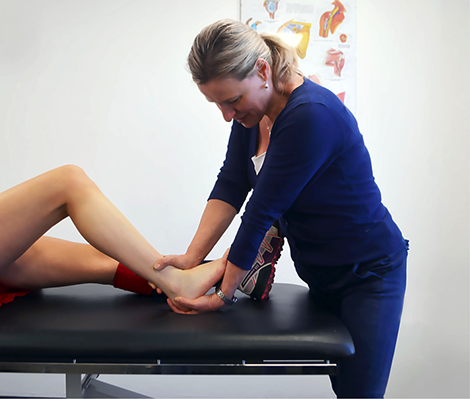Massage Therapy
Massage therapy has been an important treatment option for our therapists, and was one of the main subject modules completed by both Mark and Cynthia in their physiotherapy studies the Netherlands. We use a deep tissue massage technique that focuses on the deeper layers of muscle tissue to help release the chronic patterns of tension in the body. It also helps to loosen muscle tissue and get blood and oxygen circulating properly
We use sports massage before and after matches. The purpose is to prepare the athlete for peak performance and to release muscle tension, promote flexibility and to prevent injuries.
Trigger point massage involves applying pressure to tender muscle tissue in order to relieve pain. Sometimes massage and trigger point therapies are performed together.
‘Skin rolling’ or connective tissue massage is a major component of our pelvic pain treatment techniques. In our experience, treating pelvic pain patients, both female and male, more often than not will include some form of connective tissue restriction.
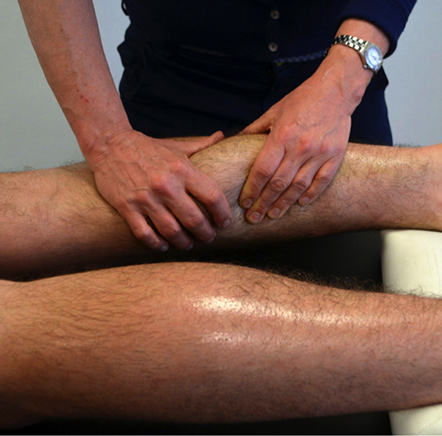
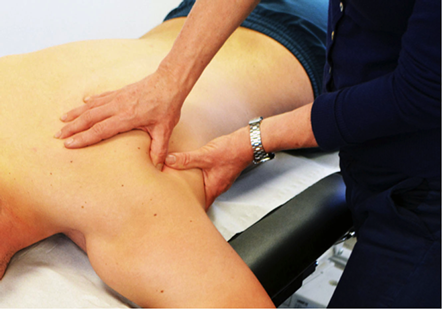
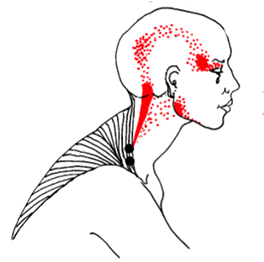
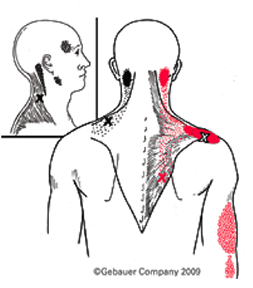
Myofascial Trigger Point Therapy
The word ‘myofascial’ means muscle tissue (myo) and the connective tissue in and around it (fascia). Myofascial pain often results from muscle injury or repetitive strain. When stressed or injured, muscles often form trigger points, like contracted knots, that cause pain and tightness.
Myofascial trigger points are an extremely common cause of pain. Trigger points are painful when pressed on (causing a shortening of the muscle fibers), and have a special property called referred pain. Referred pain means that a trigger point in one muscle can create pain in another area.
For instance, when the muscle at the top of your shoulder (trapezius) has a trigger point it will refer pain up the side of your neck and head causing a headache. Active myofascial trigger points in the muscles of the shoulder neck and face are a common source of headaches. In many instances the headache has the features of so-called tension headache, but there is increasing acceptance that myofascial trigger points may initiate classical migraine headaches or be part of a mixed tension/migraine headache complex.
Muscles make up between 36-42% of body weight, on average. They are a large percentage of our total weight and have a corresponding impact on our health. When all is in working order, muscles allow us to perform normal activities with ease. When our muscles harbor trigger points, we experience pain, stiffness and tension, physical limitation and loss of normal function.
Treating each trigger point is relatively simple. Treating the whole myofascial pain syndrome so that pain fully goes away is a more complicated process.
Since a trigger point is the contraction mechanism of the muscle locked into a shortened position, the treatment of the trigger point involves unlocking that contraction mechanism (sarcomere). This can be achieved in several ways. Trigger Point Pressure Release (David Simons, MD and Janet Travell, MD) involves applying pressure with a finger or other instrument to the trigger point and increasing the pressure as the trigger point "releases" and softens. There are a number of variations on this technique and a skilled practitioner will choose which is right for each patient and muscle treated. Once trigger points are released, the muscle needs to be moved throughout its full range. Simple limbering movements done by the patient at home are important in the retraining of the muscle.
Dry Needling
Dry Needling is the insertion of sterile single use acupuncture needles directly into myofascial (muscular) trigger points. Trigger points are tight, tender knots within the muscle that cause, and contribute to, pain within the body. Several studies have confirmed that myofascial pain is one of the most commonly ignored causes of persistent pain. Research studies have also shown that inserting such needles into trigger points causes favourable biochemical changes within the body, which release the trigger points and help reduce pain.
Although Dry Needling uses the same needles as acupuncture, it is not the same technique. Dry Needling is strictly based upon western medicine principles of treating myofascial trigger points, which are different to traditional acupuncture points. The physiotherapists using Dry Needling techniques at our clinics have all undergone specific training since 2007 and the Dry Needling technique is well recognised and acknowledged within the physiotherapy field.
Once trigger points are released, the muscle needs to be moved throughout its full range. Simple limbering movements, as prescribed by the physiotherapist and done by the patient at home, are important in the retraining of the muscle.
Joint Mobilisation
Joints in the body can often become stiff and painful. Physiotherapists are able to create small pressure forces by positioning their hands on the joint and then gently pushing to restore movement (e.g. spine, knee cap, shoulder). This type of movement cannot be achieved by exercise or stretching alone. The application of this technique can, over time, help to improve the health of tissues, restore range of motion, and reduce pain. We use different principles of joint mobilisation like Maitland, Kaltenborn and Mulligan concepts.
